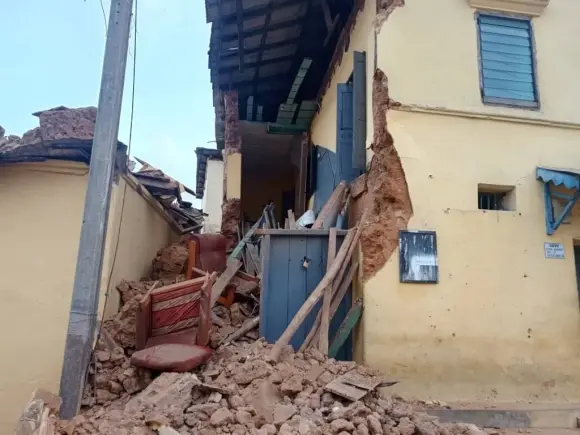In the wake of a spate of devastating building collapses that in Cape Coast, the National Disaster Management Organisation (NADMO) has announced a nationwide initiative to assess the structural integrity of ageing buildings.
The decision comes after five structures crumbled within days, leaving over 124 individuals displaced and prompting widespread concern over building safety across the country.
Director of NADMO’s Inspectorate Unit, Richard Amo Yartey, made the revelation during the distribution of relief supplies to affected families.
“Across the country, we don’t have structures collapsing all over the country. But then, this is an eye- opener, a wake-up call for us to start doing some assessment on very old structures which have not seen maintenance for a very long while. So that we don’t wake up to hear some of these things happening in other places in Ghana.”
He added that, “Cape Coast is going to start, and it has to be replicated in other parts of the country to ensure that old structures that have not seen maintenance for many years do not collapse suddenly, with people dying. It’s very sad that we lost people”.
NADMO’s decision comes at the backdrop of the worsening flooding in the Central Region.
According to reports, within just 24 hours, the number of flood-affected municipalities rose from 11 to 14, with over 5,000 lives being impacted, and some of the newly inundated areas located in illegal mining zones raising further alarm about ground instability.
Additionally, NADMO’s Central Regional Director, Kwesi Dawood, described the situation as dire.
“The region is in distress. We need more relief items. We need support.”
NADMO’s nationwide audit of ageing buildings will begin in Cape Coast and expand to other regions.
The goal is to prevent loss of life by identifying vulnerable structures before they give way.
The organisation is also urging landlords, district assemblies, and the general public to prioritise regular maintenance and adhere strictly to building codes, especially in flood-prone or geologically unstable areas.



















